Eco-Runner Team Delft
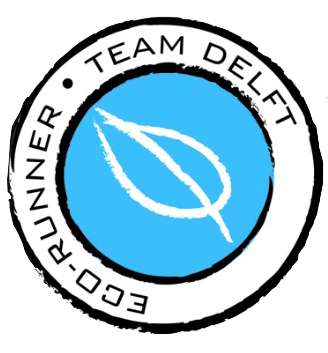 | |
| Full name | Eco-Runner Team Delft |
|---|---|
| Location |
Delft, Netherlands 51°59′58.5″N 4°22′35″E / 51.999583°N 4.37639°ECoordinates: 51°59′58.5″N 4°22′35″E / 51.999583°N 4.37639°E |
| Team Manager |
|
| Chief Engineer |
|
| Website |
ecorunner |
| Founded | 2005 |
Eco-Runner Team Delft is a student team from the Netherlands, aiming to build extremely fuel-efficient hydrogen powered vehicles. Since its first appearance at the Rockingham Speedway in 2006, the team has participated in multiple editions of the Shell Eco-marathon, in which it achieved a fuel burn equivalent of 3653 km/l in 2015. The office of the team is situated in the D:Dream hall of the University of Delft, where other dream-teams are situated as well.
About the team
Eco-Runner Team Delft was founded by a handful of technology students in the Netherlands in November 2005. In its first year, the team consisted of eleven second year students of the Faculty of Aerospace Engineering, Delft University of Technology. Seven of these students were from Belgium and four were Dutch. The team's goal was to compete in the Shell Eco-marathon on the Rockingham Speedway in the UK in July 2006.
Currently, the team consists of around 25 TU Delft students from various different faculties. The team consists of five full-timers including Team Manager, Chief Engineer, Technical Manager, Chief of Electronics, and Chief of Power train, who stopped their study for a year to work on this project. The rest of the team consists of part-timers, who work a few days per week on this project. The team is divided into various different departments, that are each responsible for a certain aspect of the project, such as body design, suspension, finance, fuel cell and power train, PR and sponsoring.
History
The Eco-Runner Team Delft is a student run team at the Delft University of Technology. The team was first founded in 2005 and every year the team tries to design the world's most fuel efficient hydrogen powered car. To prove this efficiency every year Eco-Runner Team Delft participates in the annual competition name Shell Eco-Marathon, which is organized by Royal Dutch Shell.
The current team has existed for 11 years. The first Eco-Runner Team originated from 2005, when three students from the aerospace faculty of the TU Delft decided to realize the design project they were performing for their studies, which resulted in the Eco-Runner 1. There have since been teams which worked every year for the Eco-Runner design. Until now, six different vehicles have been produced. At present the new team is working on the Eco-Runner VII which will be the next design car for the Shell Eco-Marathon 2017.
The Eco-runner 1
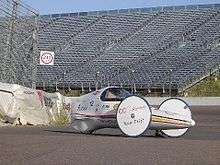
In its first year the Eco-Runner Team Delft built the Eco-Runner 1. This vehicle was built in a limited time and with limited resources, but it nonetheless achieved the team's goal of running 500 kilometers on one liter of petrol. Even with a non-functioning fuel injection system, which was the most important feature of the vehicle, the team was able to achieve 557 kilometers per liter. This achievement encouraged the team to build a new Eco-Runner and participate again with a goal of 2000 kilometers per liter and a top-5 place in the Shell Eco-marathon at the Rockingham speedway.
The Eco-Runner H2

The second Eco-Runner is called the Eco-Runner H2. Its main improvement with respect to the first version is its completely integrated design. This results in an extremely aerodynamic shape and a light weight of the vehicle. On top of that the team is developing two propulsion methods for this new Eco-Runner H2, actually resulting in two Eco-Runners H2.
The first propulsion method comprises a fuel cell driving an electric motor.
The other method is a six-stroke petrol combustion engine. The basic principle of this engine is the same to that of a four-stroke engine but for the injection of a drop of water after the fourth stroke. Due to the extreme heat remaining in the cylinder head, the water will expand rapidly, resulting in a "free" working stroke. The team is aware of this engine's downside, which is the combination of water, high temperature and high pressure, inevitably resulting in a high level of corrosion.
The Eco-Runner H2 participated in the 2007 edition of the Shell Eco-Marathon, where it achieved the Dutch fuel efficiency record of 2282 km/l of petrol using the fuel cell set-up (The hydrogen consumption of the fuel cell is monitored carefully by race officials and then converted to the equivalent of a liter of Shell 95 standard fuel using specific combustion heat of both substances). This was despite a hastily repaired and therefore very poorly working cruise control - a feature essential for keeping all of the components at their point of maximum efficiency. The Eco-Runner H2 holds the Dutch fuel efficiency record to this day.
The Eco-Runner 3
The third generation of the Eco-Runner participated in the Eco-Marathon of 2011. Major improvements over the old vehicle include the aerodynamics and fuel cell efficiency, while the weight of the vehicle has dropped significantly. Almost no parts of the Eco-Runner 3 were off-the-shelf: 95% of all components are of an in-house design or at the very least modified to suit the team's specific needs.
The Eco-Runner 4
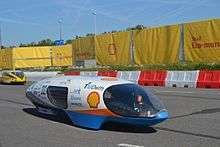
The fourth generation of the Eco-Runner participated in the Shell Eco-marathon of 2014 held in Rotterdam. The prototype is named as a hydrogen class vehicle. The major specification changes in the prototype were done over the energy in hydrogen converted to energy in gasoline (litres), which allowed the vehicle to achieve a significant result of 3524 km/l. Also the weight of the vehicle was around 38 kg and driver weight was 50 kg, which led to a drop in significant results from the previous version of the Eco-Runner to the current version. During the race the average force generated was around 4 newtons, and a nominal power of 35 watts was also achieved.
The Eco-Runner V
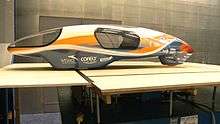
The fifth generation of the Eco-Runner participated in the Shell Eco-marathon of 2015 held in Rotterdam. The archetype was named as a one man vehicle powdered by hydrogen fuel cell, becoming a category in the hydrogen class vehicle. The major specifications of the Eco-Runner V were carried over by the promising result of the aerodynamic shape. This led to being optimized for a variety of wind directions combined with flow patterns. Having the energy in hydrogen converted to energy in gasoline (liters), this allowed the vehicle to achieve a significant result of 3653 km/L. Furthermore new aspect was taken into consideration by the team first is the use of front wheel steering mechanism enables the vehicle to achieve a turning radius of just 8 meters.
The Eco-Runner VI
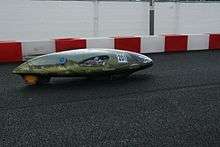
The newest design vehicle of the Eco-Runner VI was considered to be the most fuel efficient hydrogen powered vehicle in the world. The Eco-Runner participated in the Shell Eco-Marathon of 2016 held in London. The major innovations were carried over in the aerodynamic properties to make it best among the world, as the shape was designed in such a way that the extensive aerodynamic CFD analysis could be fully optimized for racing conditions. The application of zigzag strips was used for the delay of the separation point of flow which ultimately led to a better performance in the race. The amalgamation of supercapacitors which were could used to serve as a buffer between the fuel cell and the motor and also for inclination as required for London tracks which made it easier to quickly distribute a lot of power to the motor and so the fuel cell could constantly run to its optimal efficiency.
Some of the major key elements which were achieved during the Shell Eco-marathon by the Eco-Runner VI are as listed below:
- The world's most aerodynamic car (CD = 0.048)
- Zigzag strips to delay flow separation
- Ready-to-drive weight of 41.5 kilograms
- Extremely efficient hydrogen fuel cell with an in-house developed control system.
- Highly efficient in-wheel electric motor
- Fifteen supercapacitors to stabilize the fuel cell output and act as a buffer
- Lightweight suspension, with highly accurate measuring devices to perfectly align the wheels
- Carbon fiber wheels, with tubeless tires at 6 bar
- Aluminium wrap to reduce weight and prevent overheating
- Pure water as the exhaust product
The Eco-Runner VII
Currently the new team of the Eco-Runner Team Delft is working on the new design of the Eco-Runner VII for Shell-Eco Marathon 2017.
Results
The results are obtained by measuring the amount of hydrogen used per km and converting it to petrol.
| Sr.No | Team Name | Year | Location | Consumption/distance (km/l) | Position/rank |
| 1. | Eco-Runner 1 | 2005 | Rockingham, England | 557 Km/L | Top 5 |
| 2. | Eco-Runner H2 | 2007 | Nogaro, France | 2282 Km/L | |
| 3. | Eco-Runner 3 | 2011 | Rotterdam, Netherlands | 2914 Km/L | 2nd |
| 4. | Eco-Runner 4 | 2014 | Rotterdam, Netherlands | 3524 Km/L | 2nd |
| 5. | Eco-Runner V | 2015 | Rotterdam, Netherlands | 3653 Km/L | 1st |
| 6. | Eco-Eunner VI | 2016 | London, United Kingdom | 1992 Km/L | 3rd |
